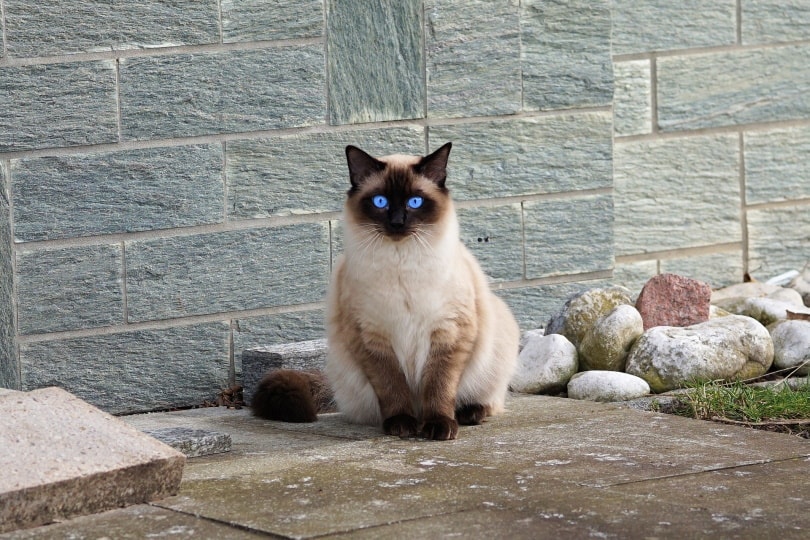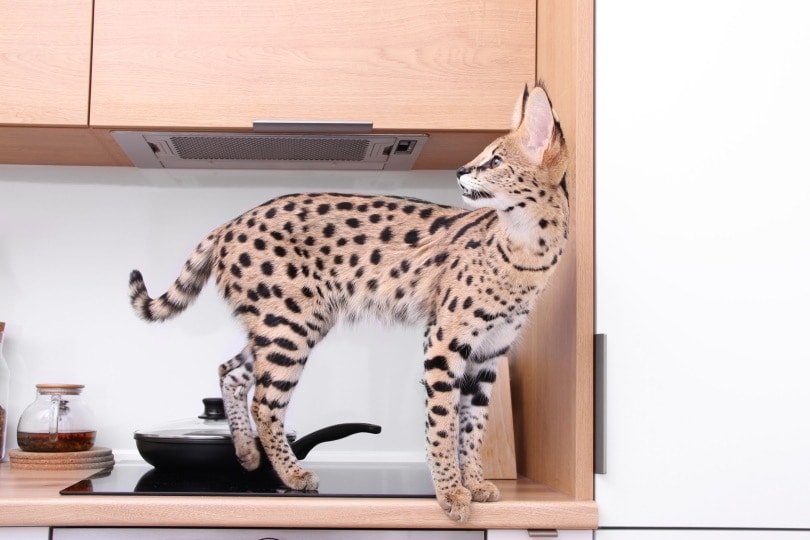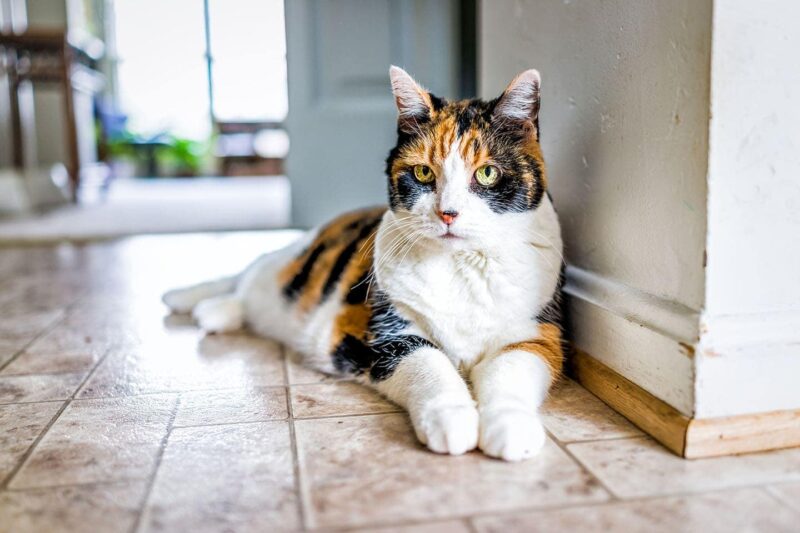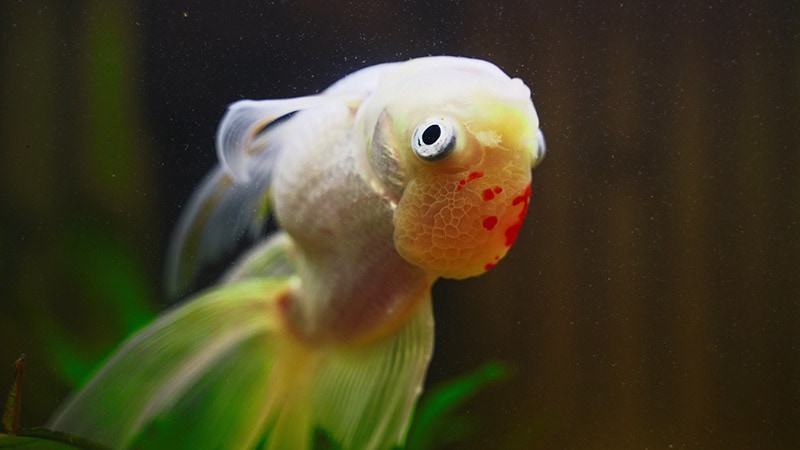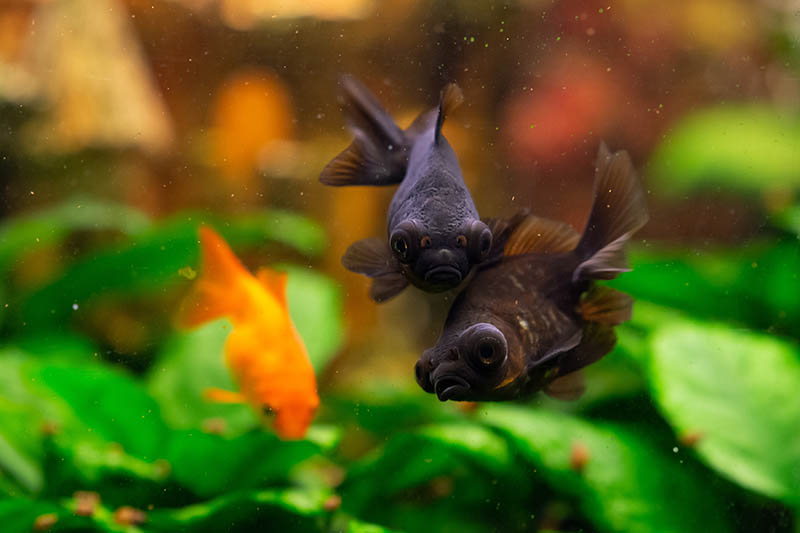Siberian vs Ragdoll Cats: The Differences (With Pictures)

Updated on
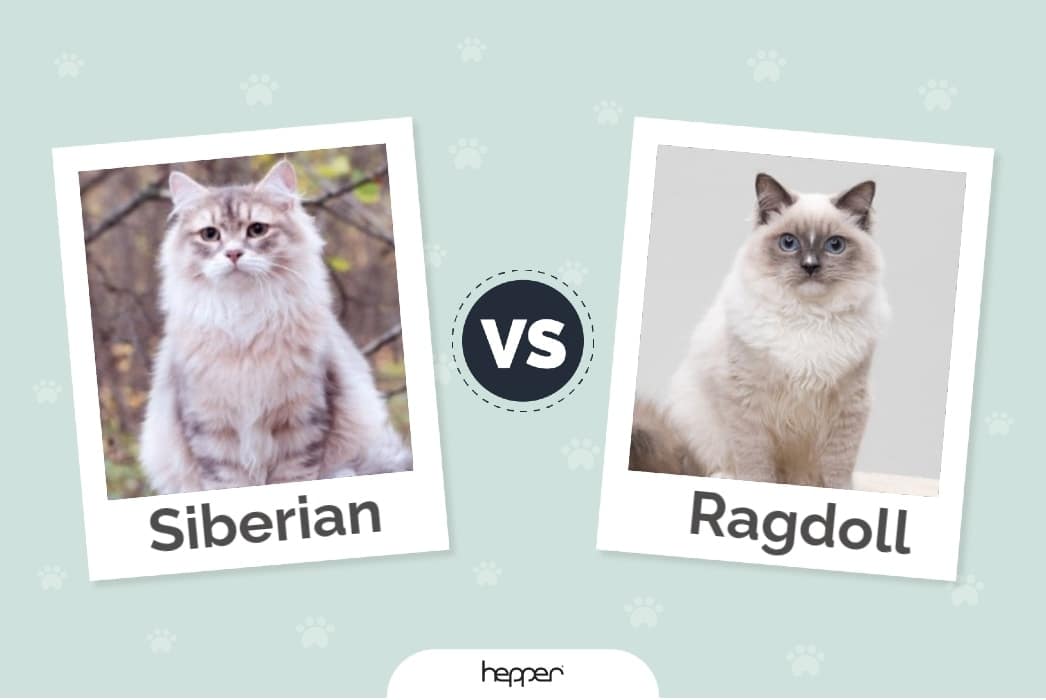
Click to Skip Ahead
There’s something about fluffy cats that makes them more adorable than regular cats. Two examples are Siberian cats and Ragdoll cats. Despite their different origin stories, they share many of the same traits, to the point where many people find it difficult to tell them apart.
The Siberian and Ragdoll breeds are popular among cat owners, which can make it even harder to choose one or the other. Contrary to popular belief, though, they’re not that similar, and a family that suits the laidback Ragdoll might be too sedate to keep up with the rambunctious Siberian.
We put together this guide to explore the differences between these two breeds and help you decide which one is best suited for your home.
Visual Differences
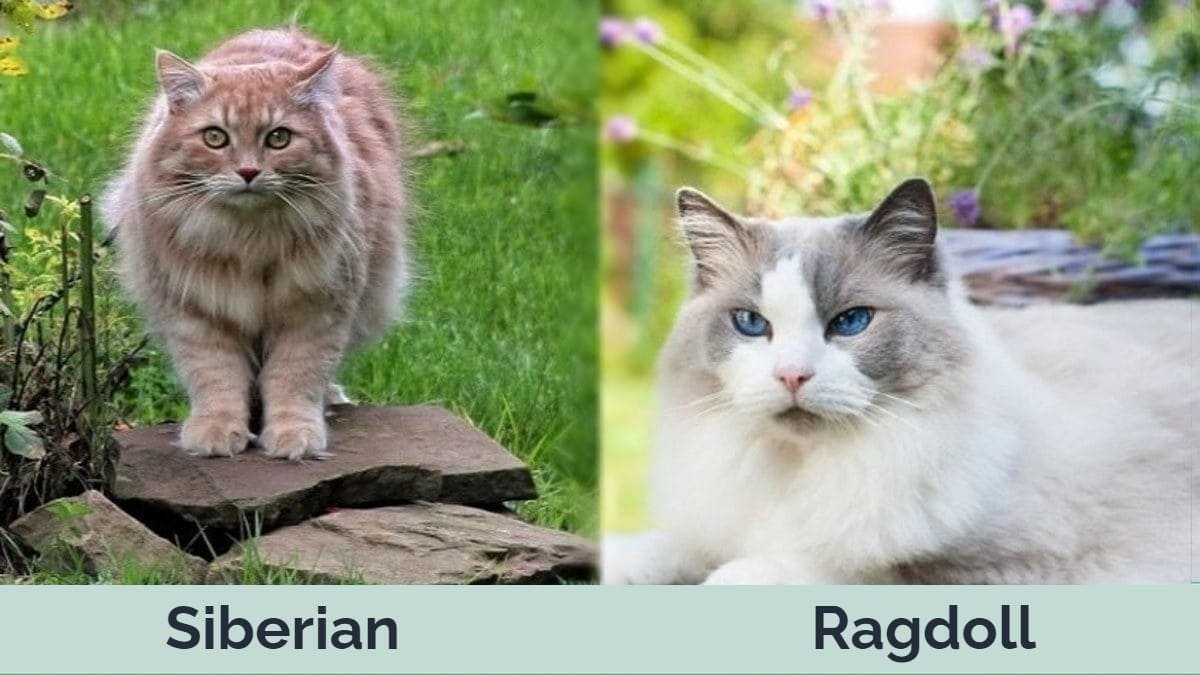
At a Glance
- Origin: Subarctic forests of Siberia
- Size: Medium to large
- Lifespan: 11–18+ years
- Domesticated: Yes
- Origin: Riverside, California
- Size: Large
- Lifespan: 15–25 years
- Domesticated: Yes
Siberian Cat Overview

Native to the subarctic forests of Siberia, Siberian cats have been around since 1000 A.D. They’re brilliant hunters and loving companions with a wild, playful streak.
Characteristics & Appearance 🐈
Despite having long since been introduced to countries around the world — although they were only welcomed to the U.S.A. in small numbers in the 1990s due to importation costs — Siberian cats still hold true to their ancestors’ appearance.
They all have the same warm, waterproof, three-layer coat in deep, rich colors and patterns. While it’s less dense during the summer months, it still requires regular grooming sessions to avoid matting.
Siberian cats are also well known for their problem-solving and trainability. While you might think that it’s strange or even impossible to train a cat, this breed is highly intelligent and generally food-oriented. For a few treats, you can teach them to do anything.
Breeding ❤️
“Wild at heart” is a phrase that sums up the Siberian cat perfectly. They’re a natural hunter with a sturdy disposition to suit their homeland. They’ll actively hunt their favorite toy, chase a ball, or bring back a few dead rodents that they snagged during their outdoor adventures.
The original use for Siberian cats goes back to the days they were first domesticated. Their hunting skills endeared them to the owners of the monasteries and farms where they sought refuge. In return for handling rodent problems, they were given places to stay.
Due to the low level of Fel d 1 protein in their saliva, they’re considered hypoallergenic and a good match for cat owners with allergies.
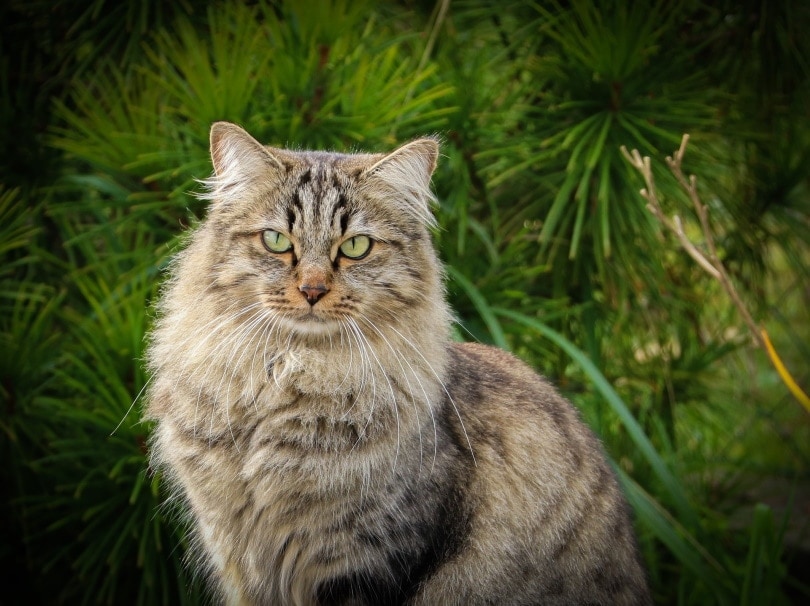
Health 🩹
In general, Siberian cats are tough kitties and don’t have many health issues. Among the most common are:
- Hypertrophic cardiomyopathy
- Kidney disease
- Crystalluria
- Hereditary cancer
Ragdoll Cat Overview
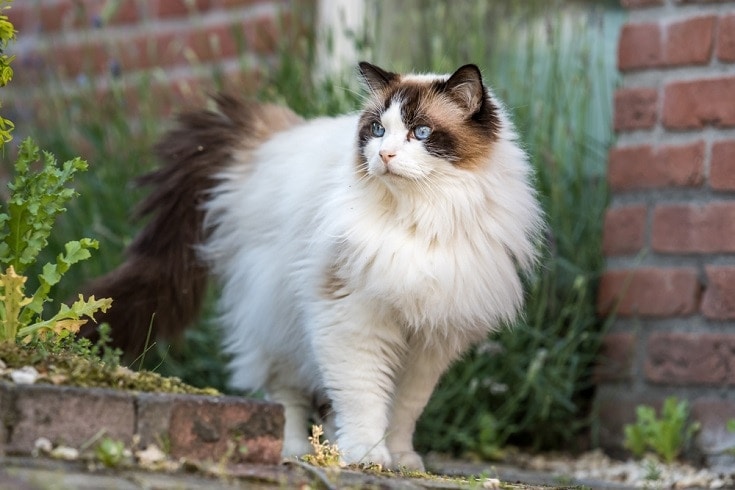
Calmer than the Siberian cat breed, Ragdolls are no less playful, but they’ll also be more likely to temper themselves with more naps.
Characteristics & Appearance 🐈
Ragdoll cats gained their name from their relaxed nature. They’re so relaxed that they’ll go limp whenever you pick them up, settling into your hold with no protest or any desire to move any time soon. They’re among the biggest domesticated cat breeds, with the males reaching 15–20 pounds in weight and the females reaching 10–15 pounds.
Along with their bright blue eyes, Ragdolls are known for their coloring and patterns.
- Blue
- Chocolate
- Cinnamon
- Cream
- Fawn
- Lilac
- Lynx
- Red
- Seal
- Tortoiseshell
- Bicolor
- Colorpoint
- Mitted
They love being around people most of all and will curl up with you for a nap or follow you around the house. They’re a placid breed that doesn’t do well with sudden weather changes or harsh temperatures. Their docile natures make them better suited as house cats rather than outdoor explorers.
Ragdolls are gentle giants, but you do have to watch how much you feed them. Their tendency to relax rather than go for athletics — like climbing from perch to perch on a cat tree — makes them susceptible to obesity. This is particularly true if you decide to train your cat with treats, so be careful to moderate their intake of food.
Breeding ❤️
Ragdolls don’t have an undercoat to set off many people’s allergies and are considered hypoallergenic.
Like the Siberian cat, Ragdolls can be playful and willing to learn all sorts of tricks. They’re so easy to train that they’ve earned the nickname, “The Dog Cat.” The gentle nature of the breed also makes them great additions to young families.
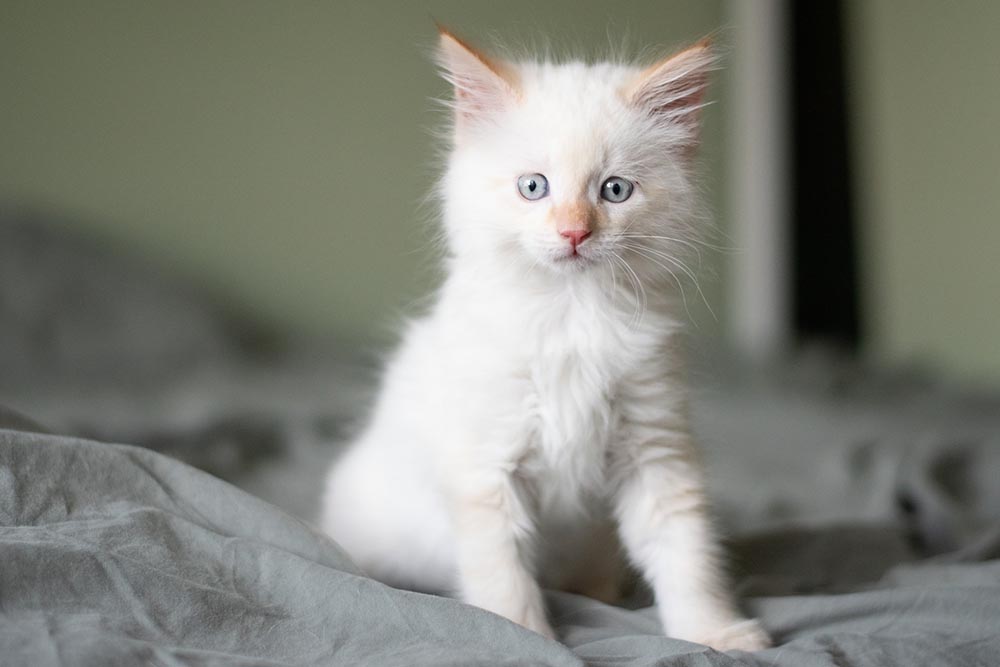
Health 🩹
The original selective breeding program for Ragdoll cats gives them a much smaller gene pool than their Siberian counterparts, so there are a few common health issues to watch out for.
- Hypertrophic cardiomyopathy
- Obesity
- Respiratory tract disorder
- Gastrointestinal disorders
Siberian vs Ragdoll Cats
Despite the similarities between these two breeds, Siberian and Ragdoll cats are quite different. Whether it’s their origin stories, temperament, or preferring the outside vs. staying at home, here are a few ways that the breeds differ.
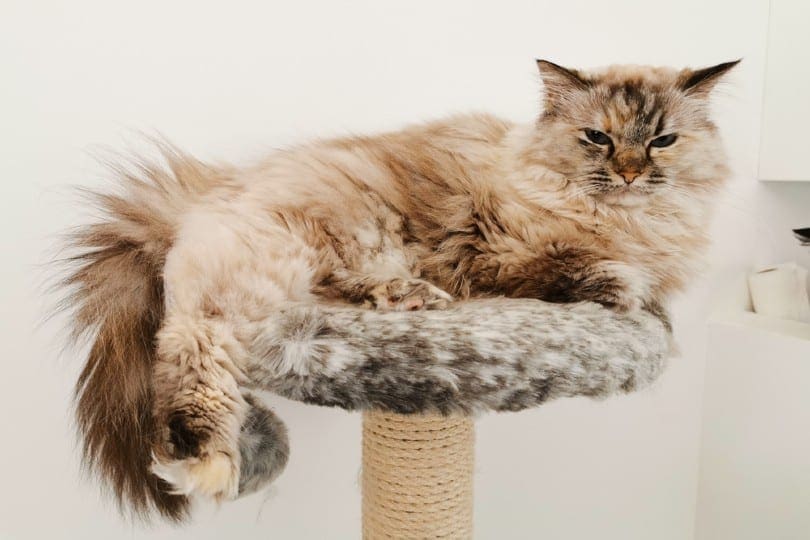
History
Siberian cats are considered by many enthusiasts to be the ancestor of all modern, long-haired domesticated cats. Originally wild cats in the forests of Siberia, they’ve been around for at least 1,000 years. When they took shelter in farm buildings and monasteries, Siberian cats were domesticated for their hunting skills.
In comparison, Ragdolls are a much younger breed. They were first introduced in the mid-1960s by Ann Baker of Riverside, California. She believed that the “ragdoll” nature of the kittens from a half-feral Persian cat called Josephine was a result of genetic modification during surgery following a car accident.
Temperament
Both Ragdolls and Siberians are sociable and friendly companions for families with or without children. Their sociability varies, though. Where Ragdoll cats will cling and follow you everywhere or happily relax in your arms, Siberian cats are more independent. Neither breed is one that you want to leave alone for too long, though.
Their energy levels differ too. While Siberian cats are more territorial and will solve all types of problems, like getting into the food cupboard, your Ragdoll will prefer to take a nap.
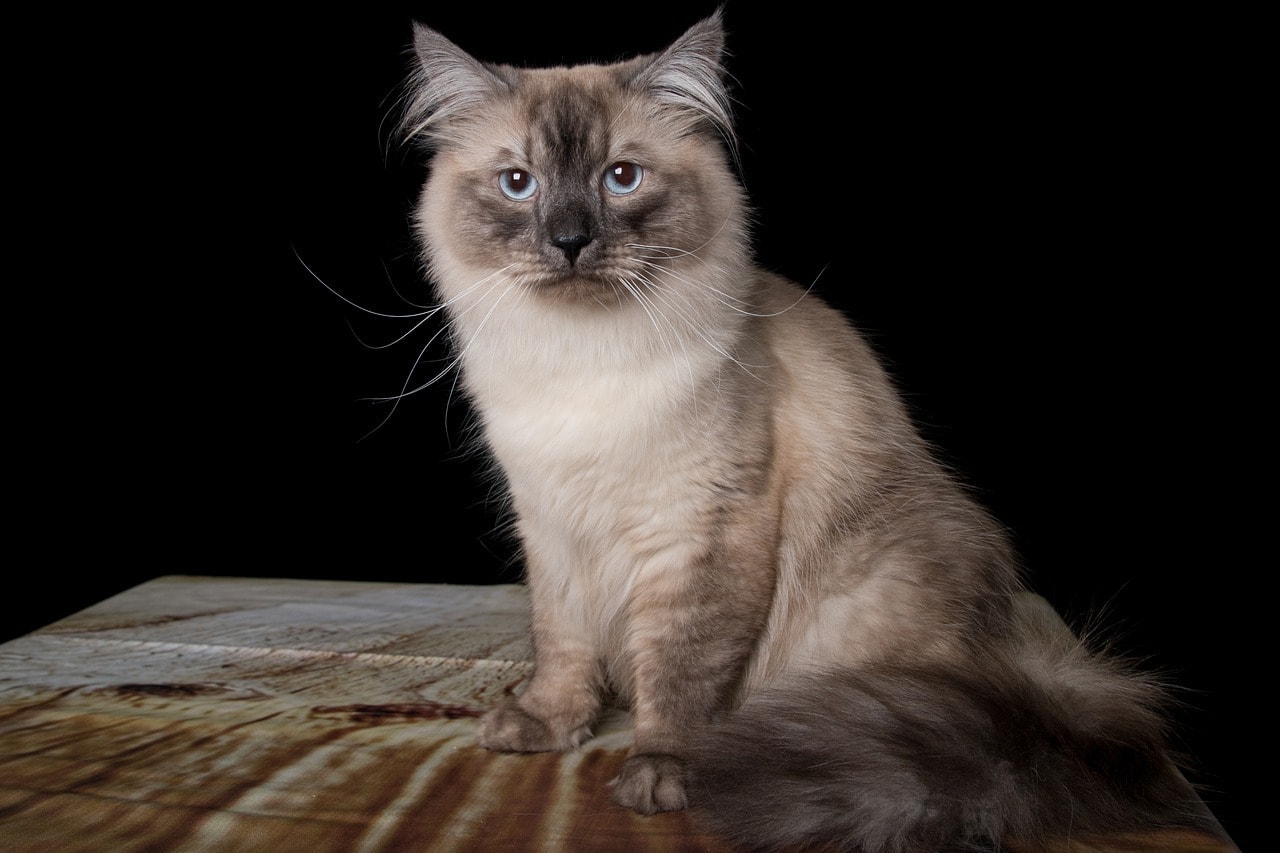
Climate
Ragdoll and Siberian cats are from two very different regions. With its harsh weather, Siberia requires a sturdier build to survive, so Siberian cats have a thick, three-layer coat to keep them warm in cold temperatures. The Ragdoll, with their lack of an undercoat, don’t handle the cold nearly as well as their Siberian cousins.
In fact, unlike the outdoorsy Siberian, Ragdolls are more suited to staying at home as dedicated house cats.
Price
While both breeds are highly sought after and rather low in numbers in the U.S.A., Siberian cats are usually more expensive. From a reputable breeder, you can expect to spend anywhere between $1,200 and $4,000 for a Siberian cat, compared to the $800–$2,000 average for Ragdoll kittens.
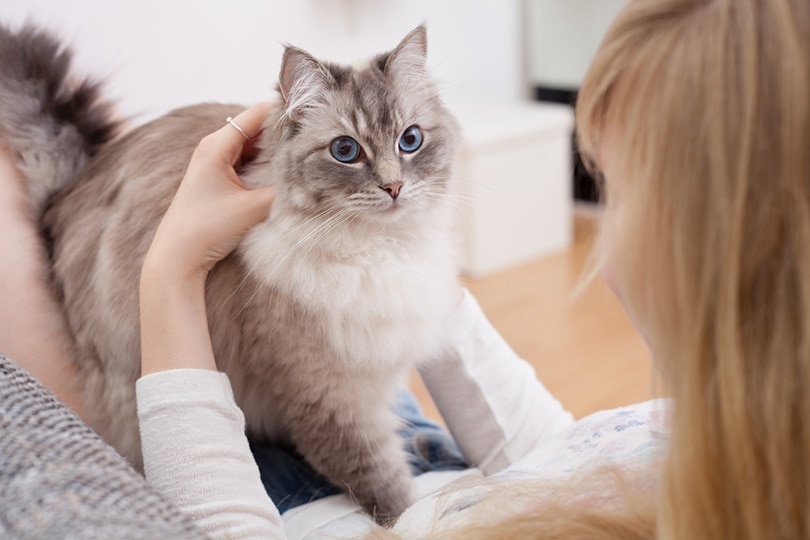
Which Breed Is Right for You?
Choosing between a Siberian cat and a Ragdoll cat depends on your lifestyle. They’re both sociable and friendly, loving attention as much as they like to curl up for a nap while you watch TV. To make the right choice, you should carefully consider their differing activity levels before purchasing either breed.
Siberian cats are athletes. They’ll launch themselves after prey and to the top shelf of your bookcase with barely a second thought. While they will curl up next to you after a long day, they’re the sort of cat that keeps moving. They will keep you moving too, even after you’re exhausted, as they’re lovers of playtime.
Ragdoll cats have a more sedentary lifestyle. They’ll play just like their Siberian cousins but not to the same extent. They much prefer relaxing in the sun to tearing around the house. As fans of hugs, they’ll stick close by, while your Siberian kitty will prefer time to themselves.
Hopefully, this guide has helped you decide whether Siberian cats or Ragdoll cats are better suited for your home. Whichever you choose, your newest family member is bound to brighten your day.
See Also:
- Ragdoll vs Snowshoe Cat: Which One Is Right for Me? (With Pictures)
- Ragdoll vs Norwegian Forest Cat: Pictures, Differences & What to Choose
Featured Image Credit: Right: Siberian Cat, Just-Mila, Shutterstock | Right: Ragdoll Cat, izmargad, Shutterstock


